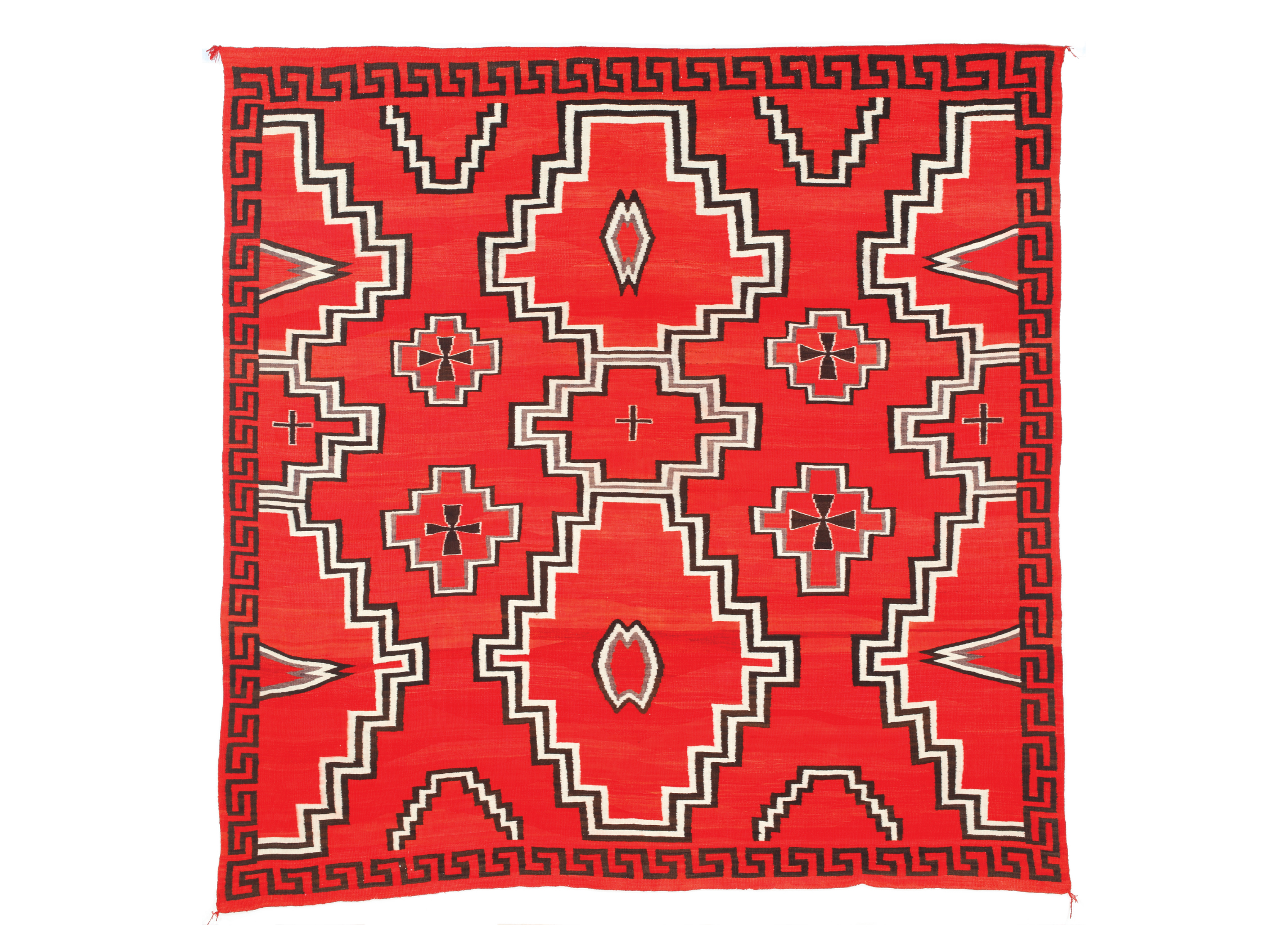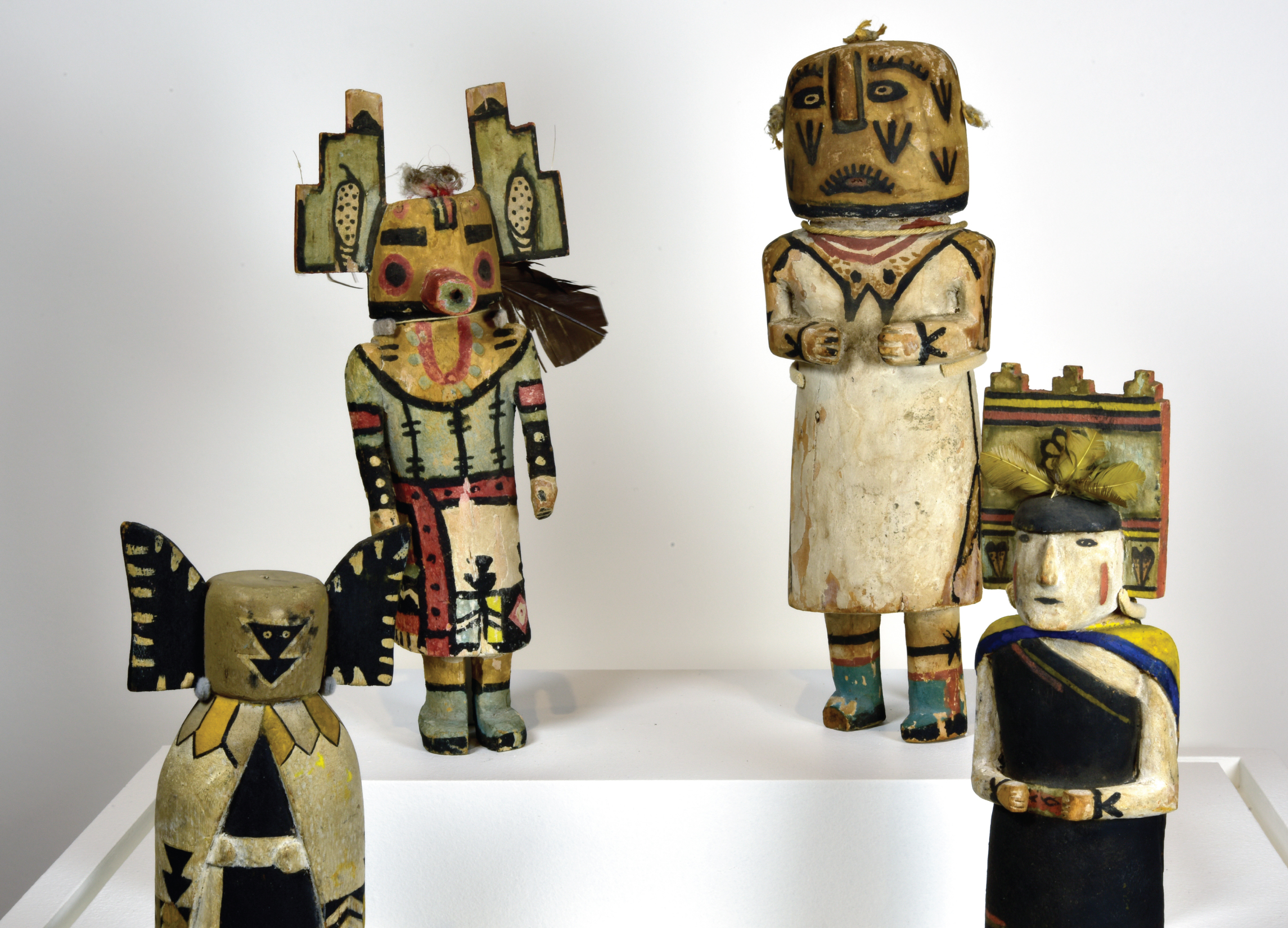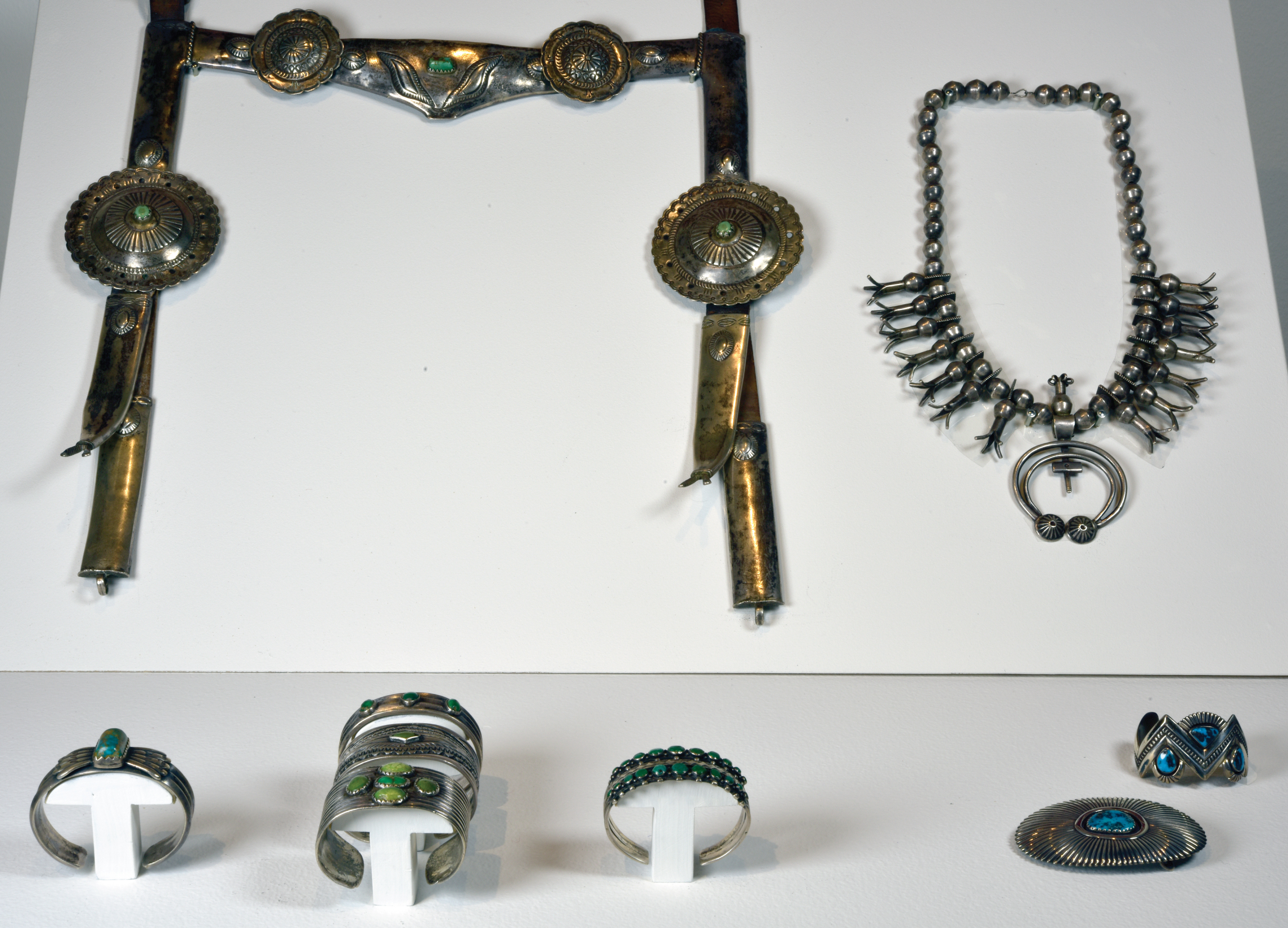Sleight Gallery
Tradition and Innovation
From its founding in 1938 to today, Palm Springs Art Museum has been collecting Native American art as an important collecting focus. Drawn from the permanent collection, this installation features basketry, jewelry, textiles, and Katsinam created at the turn-of-the-nineteenth century—a transitional period that combines a continuity of tradition with innovative change. This presentation highlights works from 1880 to 1920 by Southern California and Southwest Native peoples, including works by Apache, Cahuilla, Luiseño, Paiute, Hopi, Navajo (Diné), and Pueblo artists.
During the late nineteenth and early twentieth centuries, a series of events brought about significant cultural, social, and economic change to Native American communities, resulting in an increased demand for their artworks. The completion of the Southern Pacific Railroad expanded the population growth in the West, increased travel and tourism, transported new materials and artistic influences, and supported the development of hundreds of on- and off-reservation trading posts and galleries from Santa Fe to Los Angeles. This period coincided with the Arts and Crafts movement in North America (1880-1920), and with its opposition to modernism and industrialization and its corresponding preference for handcrafted artworks, which furthered a nationwide market for Native American art.
The donated collections of early Palm Springs settlers, including Nellie Coffman, J. Smeaton Chase, Cornelia White, and Jimmy Swinnerton, provided the foundation of the museum’s historic Native American collection and inspired additional important gifts. Examples of modern and contemporary artworks by Native American artists are currently on view in other museum galleries.




